Thanks, but no thanks: some in encampments
Promised help brings spectre of dealing with landlords, rules for those ‘living rough’
Advertisement
Read this article for free:
or
Already have an account? Log in here »
To continue reading, please subscribe:
Monthly Digital Subscription
$0 for the first 4 weeks*
- Enjoy unlimited reading on winnipegfreepress.com
- Read the E-Edition, our digital replica newspaper
- Access News Break, our award-winning app
- Play interactive puzzles
*No charge for 4 weeks then price increases to the regular rate of $19.00 plus GST every four weeks. Offer available to new and qualified returning subscribers only. Cancel any time.
Monthly Digital Subscription
$4.75/week*
- Enjoy unlimited reading on winnipegfreepress.com
- Read the E-Edition, our digital replica newspaper
- Access News Break, our award-winning app
- Play interactive puzzles
*Billed as $19 plus GST every four weeks. Cancel any time.
To continue reading, please subscribe:
Add Free Press access to your Brandon Sun subscription for only an additional
$1 for the first 4 weeks*
*Your next subscription payment will increase by $1.00 and you will be charged $16.99 plus GST for four weeks. After four weeks, your payment will increase to $23.99 plus GST every four weeks.
Read unlimited articles for free today:
or
Already have an account? Log in here »
Tucked along the edge of Fort Douglas Park, just south of Higgins Avenue, the encampment Joseph calls home is sprawling, eclectic and chaotically organized.
He says at least eight others live here, in a mix of modest tents and larger makeshift shelters — including a treehouse with a window, draped in tarps and propped up by a patchwork of timber supports.
Some spaces are personalized: a dreamcatcher sways from one tree; a flotation device hangs from another. Tarps stretch between branches to shield beds and belongings from the rain.
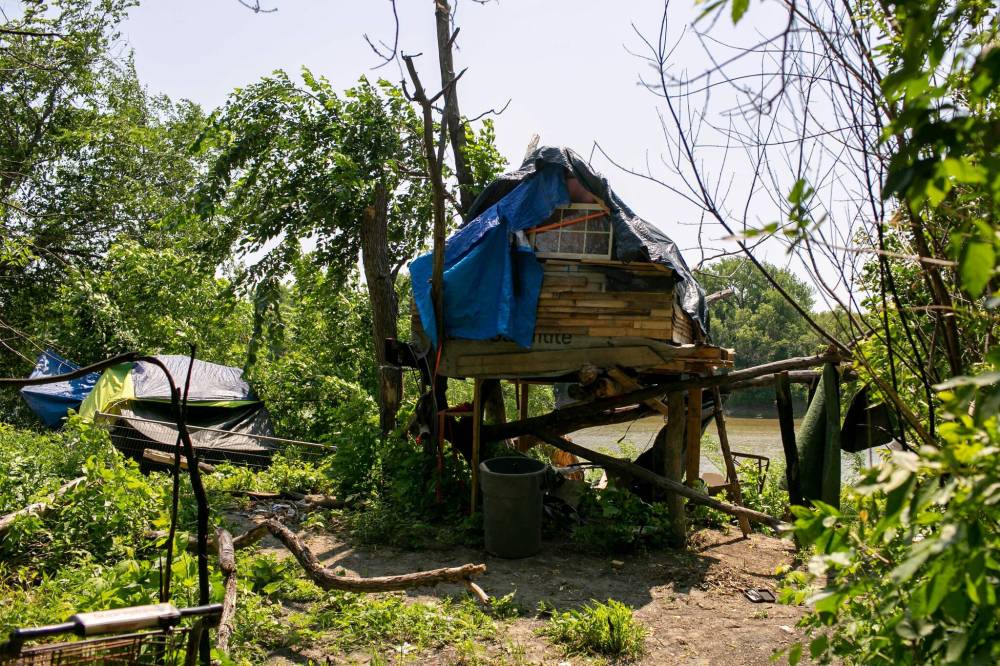
BROOK JONES / FREE PRESS
Encampments are getting larger and their residents more creative in building shelters, as seen by this treehouse near Waterfront Drive.
Joseph’s own setup is simple but functional — a large tent beneath layered tarps, with another draped in the doorway to let in a breeze while keeping the bugs out. Next door stands a comparatively massive structure, complete with a front door and wrapped in insulation.
Shirtless and wearing sunglasses, the tall, thin man crouches over a pile of metal odds and ends, searching for an Allen key to fix the brakes on his black, BMX-style bike.
Outside his tent, a crooked Coleman barbecue rests on uneven ground. Nearby, a small jerry can sits atop a broken fan inside a shopping cart.
He says about 90 per cent of the items around him — a jumble of scrap metal, tools and bicycle wheels — have been gathered by and for the community through bartering, salvaging and theft.
“I love it right here how we are,” he says. “I don’t have to listen to anyone else’s bulls—t… I can do what I want. I respect and love how everybody leaves my (things) alone.”
In the middle of a long conversation, Joseph suddenly gestures toward what he calls the hardest part of “living rough.”
Two men are walking along the trail above the encampment. As they pass, Joseph locks eyes with them — catching the judgment in their glance.
“The exhibit’s not open, man,” he calls out, loud enough for them to hear. That’s the worst part, he says — being stared at, scrutinized, judged. “They don’t understand because they haven’t lived it.”
It’s a sentiment shared by many who live along these trails, where the wooded edge of Fort Douglas Park borders the hum of the Disraeli Freeway.
“Come down here and spend a week,” Joseph says. “It will change everybody’s mind.”
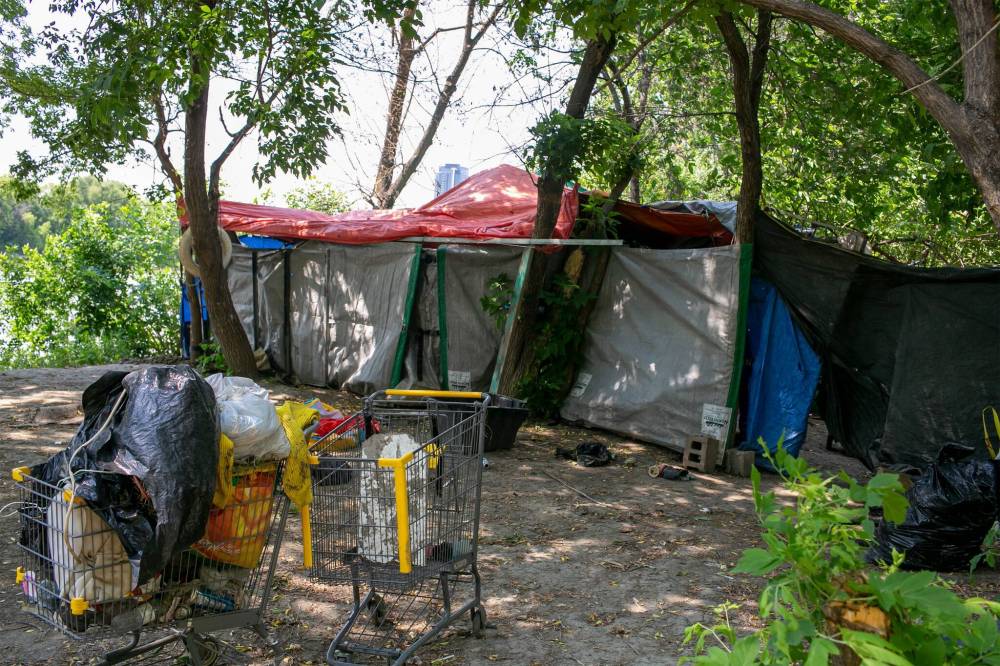
BROOK JONES / FREE PRESS
Some encampments are becoming more like shanty villages than temporary refuges.
“Come down here and spend a week… It will change everybody’s mind.”–Joseph
Joseph has lived here for eight years. For him, the hardest part isn’t the weather — it’s the thought of leaving. He loves the outdoors, and he doesn’t want to give up the community he’s found.
“These are the people I trust, instead of somebody I don’t trust or don’t know,” he says, scoffing at the province’s plan to end homelessness, including encampments, by 2031.
“And why? We don’t have to pay rent. Why would I pay $600 for someone to tell me how to live when I could pay nothing and live how I want to live.”
“Why would I pay $600 for someone to tell me how to live when I could pay nothing and live how I want to live.”–Joseph
Joseph says he isn’t going hungry, saying Main Street Project — heralded by many around these parts — usually comes by once a day to hand out water and sandwiches. And he manages to fund his $100-a-day crack-cocaine habit.
“Money just falls in my lap, how about that?” he says with a snicker.
Further down the trail, near the Louis Bako River Landing, lies another encampment, nestled into the brush beside the Red River.
“Most of us find our way back,” says Ray, who is one of the camp’s residents, and has cycled in and out of housing for years.
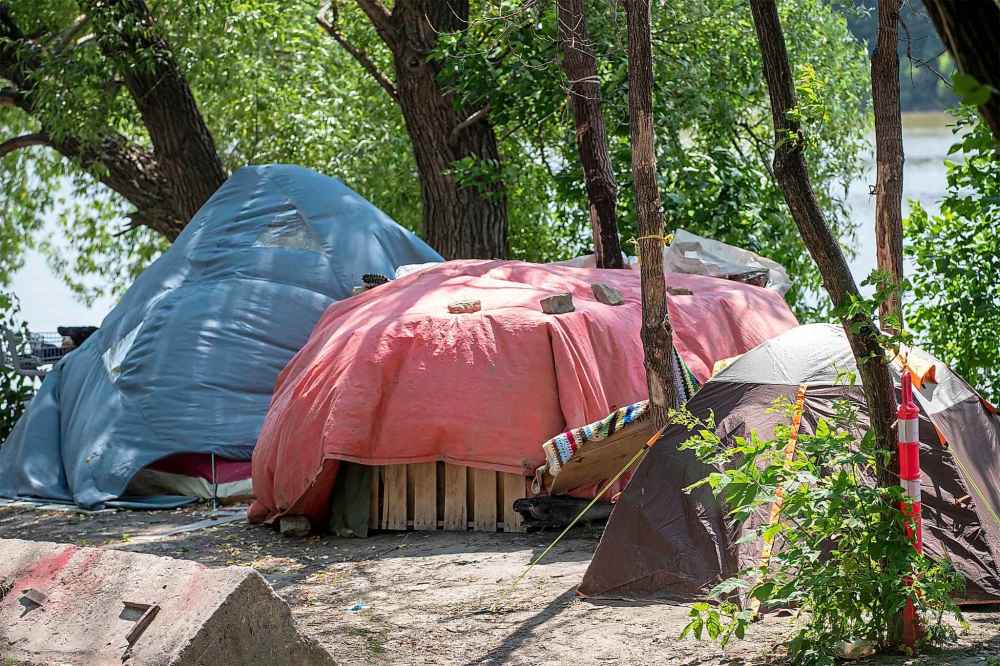
This camp is smaller than Joseph’s but shares the same sense of community.
Ray, Johnny and Vaughn lounge in lawn chairs outside their shelters — tents with awnings and lean-tos under tarps.
Ray watches the river flow. Johnny paints his white FXR snowmobile jacket. Vaughn colours his bike tires blue with a small brush and paint pots.
Birdsong, rustling leaves and distant sirens fill the air. There’s a calm to the area that they feel is hard to beat.
“It’s like being at the lake, like at the cottage,” Ray says. “There’s no judgment, apart from the people walking by and looking down at us.”
All three have experienced homelessness for years.
“If there was a house for me right now, I’d be up and out of here,” he says, acknowledging he’s not as tied down to people around him as others are. “I had a place. I just lost it. The reason why I’m down here is I can’t find (housing) right now.”
Still, the province’s homelessness strategy is struggling to meet demand. Since the plan was announced in January, 45 of the approximately 700 people who were living in camps have been housed.
Last week, Tessa Blaikie Whitecloud — the former CEO of Siloam Mission tapped by Premier Wab Kinew to lead the strategy — said the province is moving as quickly as possible to secure and develop infrastructure.
She pointed to a May news release announcing the purchase of 67 new housing units at three sites at a cost of $6.4 million. Those homes, she said, will begin welcoming tenants in the months ahead.
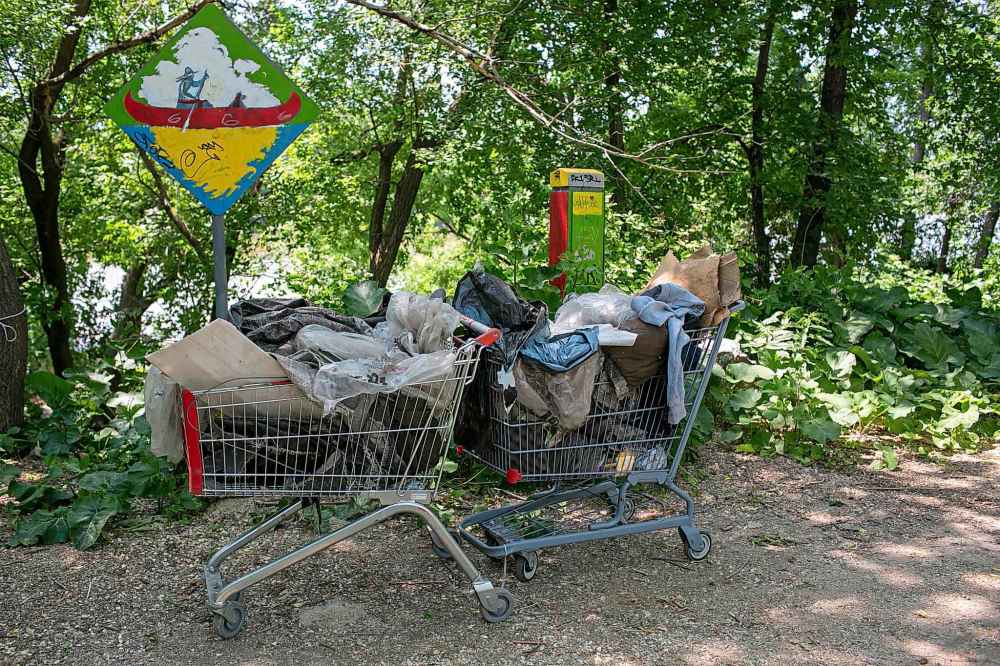
Joseph, who dismisses the province’s Your Way Home strategy with a laugh, doesn’t plan to be among them.
“Not going to happen,” he says. “Because you’re going to have people who don’t know each other living in housing, and there’s going to be problems and you’re going to have landlords telling you what to do.
“It’s not going to happen. Everyone is going to… be back in this.”
Joseph doesn’t need words to get his message across to those pushing to dismantle the encampments. He lets his two raised middle fingers do the talking.
“This is my home. I built this,” he says. “What did you build? You had someone build your house. We did this ourselves.”
Many living without housing say the public doesn’t understand that some choose this life. Others, however, find themselves in it after being evicted, or because they can’t afford to live any other way.
Ray says adjusting to life indoors after years on the street isn’t easy.
“They should come down and live here for a week, or just stay a couple of days, stay overnight,” he says. “They don’t understand it, and they’re the ones making the plans to move us out of here. How does that work?”
No one involved in crafting the province’s plan, they say, has spoken to them.
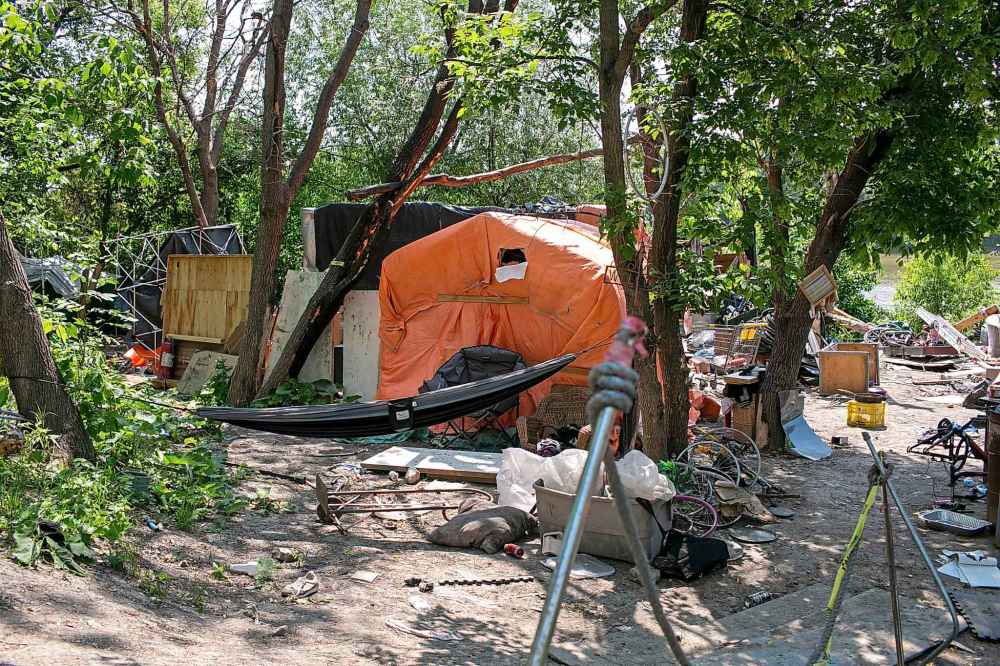
Instead, they feel the public is being fed a narrative — that encampments are dangerous for residents and the public. But what looks like trash to passersby is survival gear — priceless treasure — to those living within.
And crime?
Despite having to nurse a hand broken fending off a thief, Vaughn says it’s no worse than anywhere else.
Most of the trouble they see comes from outside — passersby trying to snatch things on their way through.
“We handle them. If you steal from somebody down, you’re going to get hurt,” Ray says, referring to a code followed by those who live in the area. “It’s a known thing. Otherwise, everyone is welcome.”
scott.billeck@freepress.mb.ca

Scott Billeck is a general assignment reporter for the Free Press. A Creative Communications graduate from Red River College, Scott has more than a decade’s worth of experience covering hockey, football and global pandemics. He joined the Free Press in 2024. Read more about Scott.
Every piece of reporting Scott produces is reviewed by an editing team before it is posted online or published in print — part of the Free Press‘s tradition, since 1872, of producing reliable independent journalism. Read more about Free Press’s history and mandate, and learn how our newsroom operates.
Our newsroom depends on a growing audience of readers to power our journalism. If you are not a paid reader, please consider becoming a subscriber.
Our newsroom depends on its audience of readers to power our journalism. Thank you for your support.









